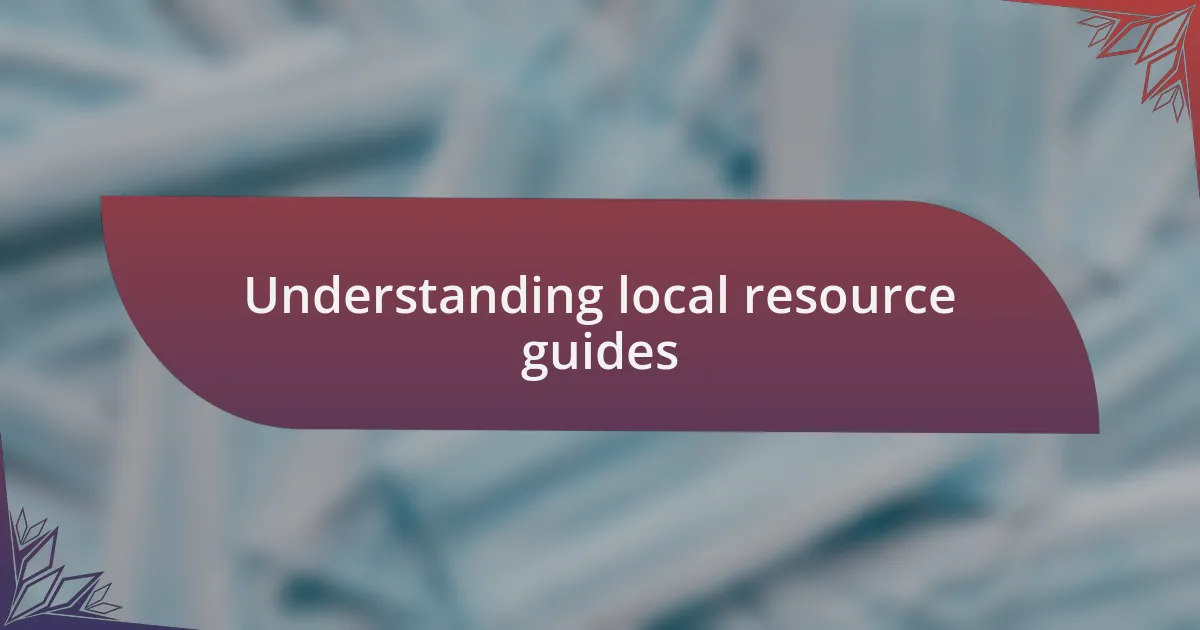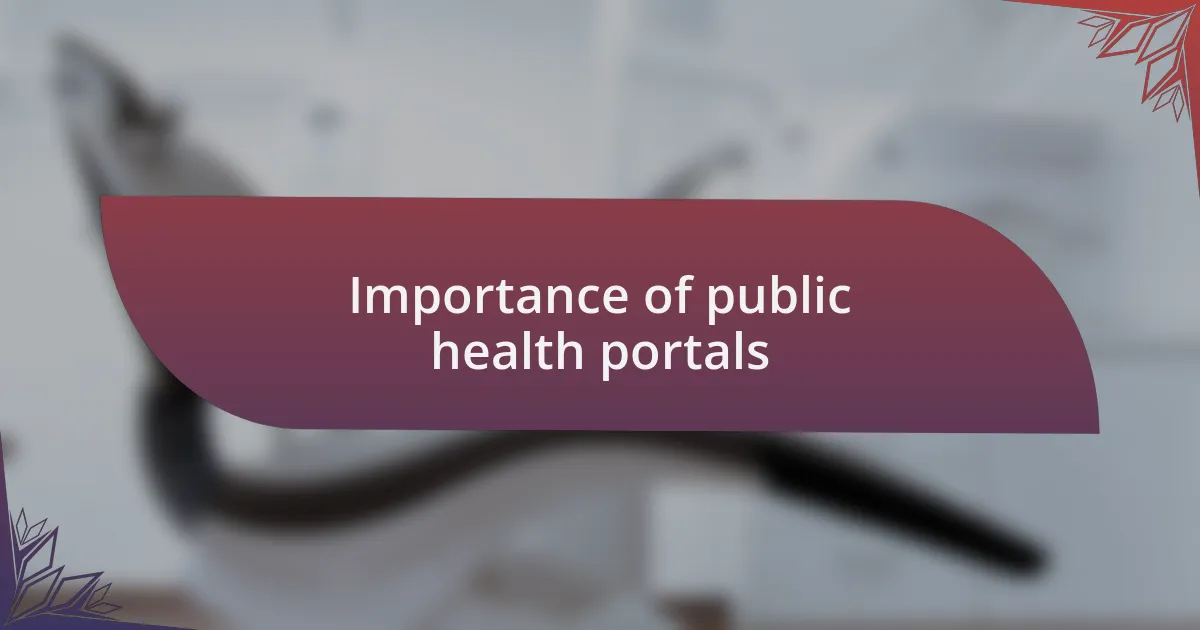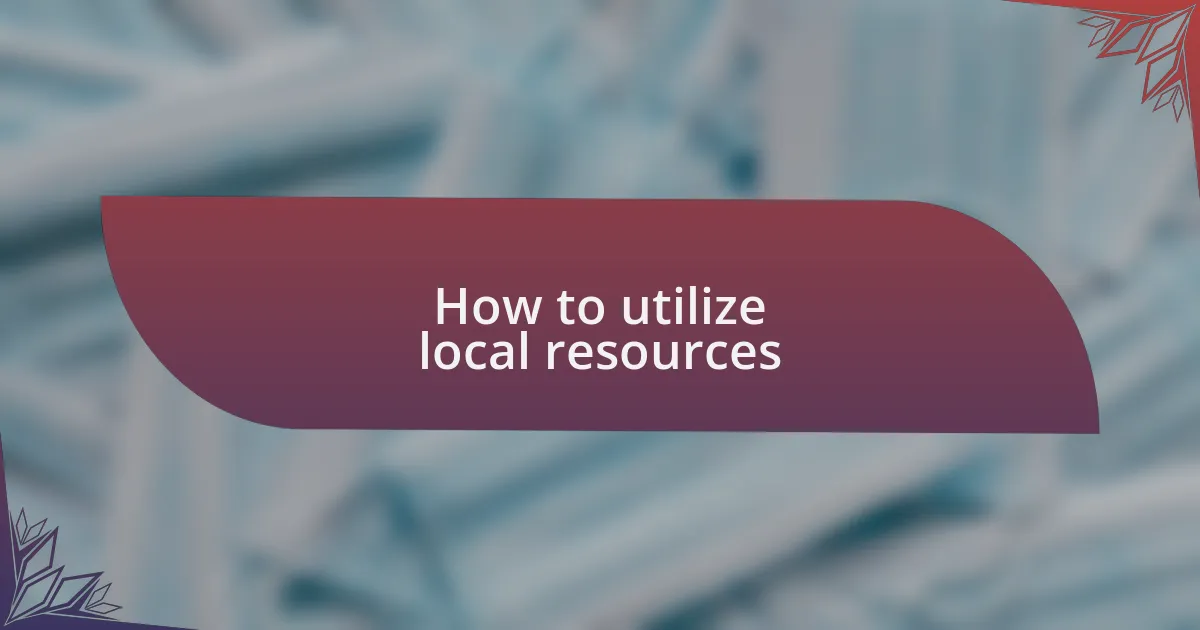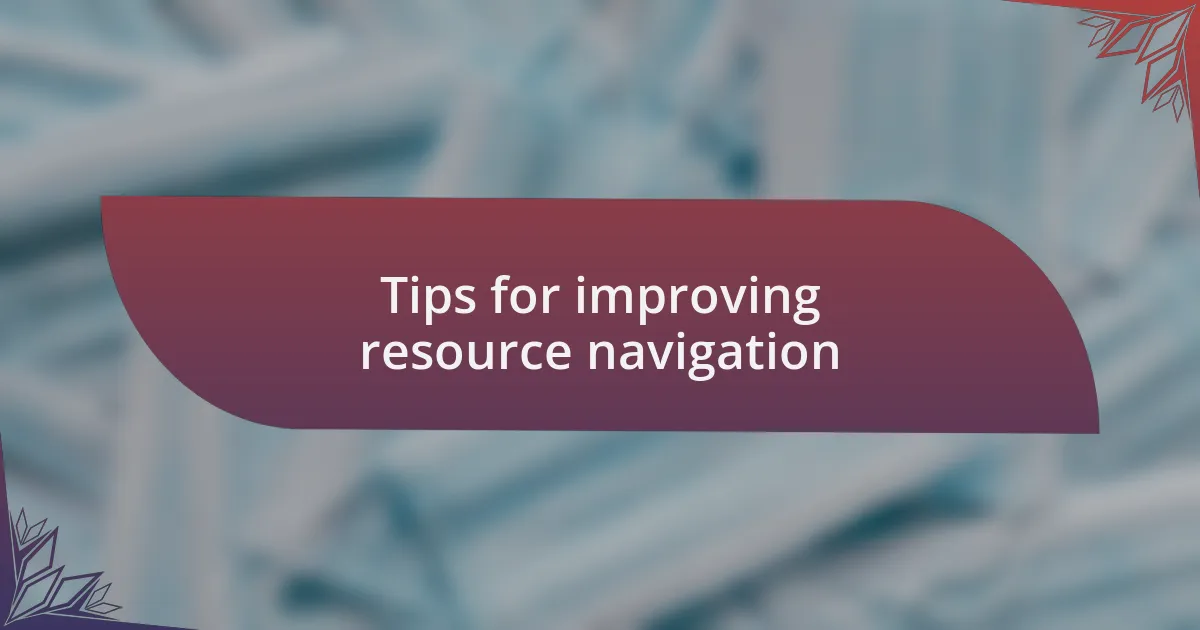Key takeaways:
- Local resource guides empower communities by connecting residents to essential services and fostering personal stories.
- Public health portals serve as centralized sources of information, enhancing accessibility and communication during health crises.
- Effective resource guides prioritize clarity, organization, and personal anecdotes to improve user experience and engagement.
- Challenges in accessing local resources include outdated information, decision fatigue, and the stigma surrounding certain services.

Understanding local resource guides
Local resource guides serve as invaluable maps to the essential services within our communities, often highlighting local health services, food banks, and shelters. I can recall the first time I stumbled upon one in my neighborhood; I was amazed at how many resources I wasn’t aware of—resources that could make a real difference in someone’s life. Have you ever wondered what hidden gems your community might be offering that you just haven’t discovered yet?
It’s fascinating to see how these guides not only provide information but also foster connections among residents. I remember attending a local health fair where a resource guide was handed out. It not only opened my eyes to available health screenings but also introduced me to community members who were eager to share their stories. Isn’t it powerful how a simple pamphlet can empower people to take control of their health?
Moreover, local resource guides often evolve alongside the community’s needs, changing to reflect current challenges and solutions. I’ve noticed guides adapting during tough times, like the pandemic, swiftly providing information on testing sites and vaccination locations. Can you think of a time when a local resource guide in your area made a crucial difference in your life or the lives of others?

Importance of public health portals
Public health portals play a crucial role in ensuring everyone has access to necessary information and resources. When I navigated a public health portal for the first time, I found a wealth of information on preventive care and mental health services that I never knew existed. Have you ever felt overwhelmed by the amount of health information out there? A centralized portal makes it easier to cut through the noise and find exactly what you need.
These portals also serve as vital communication tools between health providers and the community. I recall reading an announcement on one such site about a free health workshop in my area. It reminded me of how these platforms not only share information but also encourage active participation. Isn’t it reassuring to know that your local health department is striving to keep you informed and engaged?
Finally, the adaptability of public health portals is remarkable. They can swiftly update information in response to emerging health crises, like flu outbreaks or public health emergencies. I remember accessing a portal during a recent health alert; the real-time information was incredibly reassuring. How do you feel knowing that, at your fingertips, you have access to timely updates that can influence your health decisions?

Key features of effective guides
Effective guides in public health portals should prioritize clarity and accessibility. I remember using a local resource guide that, despite being packed with information, felt complicated due to jargon and dense text. It made me wonder, how many others might get lost in similar guides? Simplicity in language can make all the difference in helping users find what they need quickly.
Another vital feature is the organization of information. When I discovered a well-structured guide that used clear headings and bullet points, it transformed my experience. It was as if I could breathe easier, navigating with ease rather than sifting through a wall of text. Isn’t it frustrating when you can’t find the information you seek in a maze of details?
Lastly, I believe that personal anecdotes can enhance guideline effectiveness. For instance, reading stories from individuals who successfully utilized local resources for mental health support made the material feel more relatable. Have you ever connected with a story that inspired you to take action? It’s in those moments of connection that guides transform from mere information sources into powerful tools for change.

How to utilize local resources
Utilizing local resources begins with knowing where to look. I once struggled to find a nearby food pantry until I stumbled upon a community bulletin board that highlighted various services. It made me realize how essential it is to familiarize ourselves with local asset listings, as they can lead to support systems we might otherwise overlook. Have you ever discovered a resource right in your neighborhood that completely changed your perspective?
Once you identify these resources, reaching out can feel daunting. I felt a mix of hesitation and anxiety when I first contacted a local mental health service for help. To my surprise, they were not only welcoming but also genuinely eager to assist. This experience taught me the importance of open communication and taking that first step, no matter how intimidating it might seem. Can you recall a moment when you pushed through your fears and found help unexpectedly?
Engaging with local resources can also create a sense of community. When I attended a health fair organized by local organizations, I met others who shared similar challenges and successes. That experience was enlightening, showing me how personal connections can enhance the benefits of these services. If you’ve ever joined a local support group, you probably felt that same camaraderie—how does it feel to know you’re not alone in your journey?

My experiences using resource guides
I’ve often relied on resource guides to uncover hidden gems in my community. One day, while browsing an online guide, I discovered a local wellness program offering free fitness classes. I signed up hesitantly, but the first session turned out to be a transformative experience. It reminded me of the importance of stepping outside our comfort zones—has there ever been a time when a simple effort revealed something unexpected?
Navigating these guides can sometimes feel overwhelming, especially with so many options available. I remember scrolling through countless listings and second-guessing my choices. However, I learned to focus on resources that resonated with my specific needs. This approach not only streamlined my search but also provided targeted support that genuinely helped me. Do you have a strategy for sifting through information and finding what truly matters to you?
There are moments when these resources have sparked uplifting connections and friendships. I recall attending a local workshop mentioned in a guide, where I met individuals who shared their personal stories of resilience. These interactions fueled my desire to give back, solidifying my belief that resource guides can lead us not just to services, but to a community of support. Have you ever found that a single event opened up a world of connections you never anticipated?

Challenges in accessing local resources
Accessing local resources isn’t always straightforward. There have been times when I’ve encountered outdated information that left me frustrated and searching elsewhere. I remember attempting to find a mental health support group only to discover the meeting times had changed, and I felt disheartened. Have you ever faced a similar situation where misinformation caused you to miss out?
Another challenge is the sheer volume of resources available, which can lead to decision fatigue. I’ve spent hours reviewing numerous options, feeling increasingly lost amidst endless lists. It’s as if each click opened up a new rabbit hole, pulling me further away from where I initially started. Have you ever experienced that analysis paralysis when trying to choose the right option?
Sometimes, accessing local resources can feel isolating, especially if you’re seeking services that require personal vulnerability. I recall feeling hesitant to join a support group because of the stigma surrounding mental health. It took a leap of faith to finally walk through those doors, and that experience made me realize how daunting and critical these access barriers really are. In your journey, have you ever had to overcome your fears to seek out the help you needed?

Tips for improving resource navigation
To improve resource navigation, one effective strategy is organizing information with clarity and simplicity. During my search for local health resources, I found that when options are grouped logically—such as by type of service or target audience—it significantly eases the decision-making process. Have you noticed how visual layouts like these help you feel less overwhelmed?
Another tip I’ve learned is to prioritize user feedback and regularly update the content. For instance, I once relied on a guide that included a list of support services, only to find many of them no longer existed. This experience reinforced the importance of current, user-driven information. Have you ever thought about how effective it would be to have a platform where users could report outdated resources or share their own experiences?
Additionally, incorporating search and filter features can be a game changer. I remember browsing through a vast database of health services, and I felt lost until I stumbled upon a search function that allowed me to specify my needs. The results not only saved me time but also made me feel more in control of my navigation. What features enhance your resource-hunting experience?